Your cart is currently empty!
Search results for: “69”
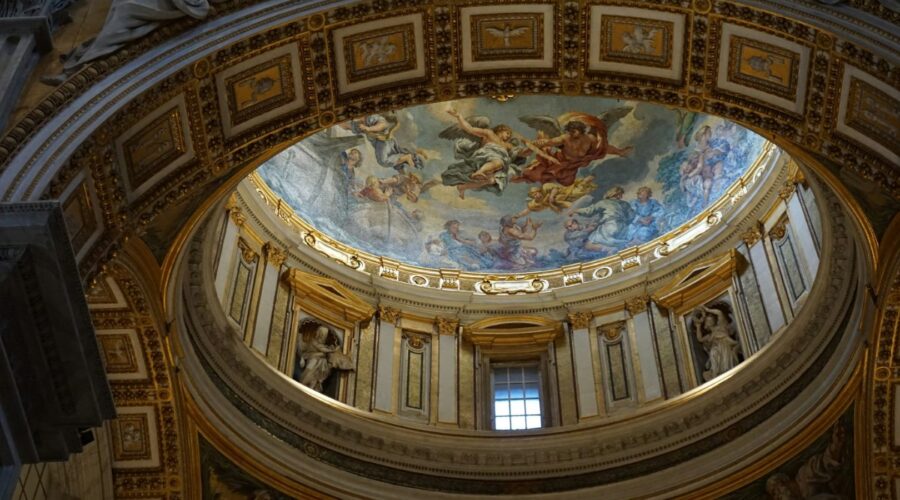
Discover the Rich History and Relevance of the Church of the Incarnation
Introduction
The Church of the Incarnation, located in New York City, is a vibrant and historic Episcopal parish that has played a significant role in American religious and cultural life for over a century. Founded in 1865, the church has a rich and fascinating history, captivating architecture, and a deep commitment to serving the community.
Historical Significance
Founding and Early Years
The Church of the Incarnation was founded in 1865 by a group of Episcopalians who sought to establish a new parish on the Upper West Side of Manhattan. The first rector, the Reverend Thomas Gallaudet, was a prominent educator and advocate for the deaf. Under his leadership, the church quickly grew and became a thriving community.
Notable Rectors
- Phillips Brooks: Served as rector from 1869 to 1891, gaining fame as a renowned preacher and advocate for social justice.
- George William Douglas: Succeeded Brooks and led the church through a period of expansion and renovation. He oversaw the construction of the present-day sanctuary.
- Harry Emerson Fosdick: Served as rector from 1919 to 1946, becoming one of the most influential preachers of the 20th century.
Community Involvement
Throughout its history, the Church of the Incarnation has been actively involved in its surrounding community. It established a settlement house, provided aid to the poor and needy, and fostered interfaith dialogue. The church continues these outreach programs to this day.
Architectural Splendor
Gothic Revival Design
The Church of the Incarnation’s iconic sanctuary is a stunning example of Gothic Revival architecture. Designed by architect James Renwick Jr., the building features pointed arches, vaulted ceilings, and intricate stained-glass windows.
Interior Features
- Altar: The reredos behind the altar depicts the Incarnation of Christ in a series of bas-relief panels.
- Pulpit: The carved oak pulpit features scenes from the life of Jesus.
- Stained-Glass Windows: The church’s vibrant stained-glass windows depict biblical scenes and figures.
Exterior Details
The church’s exterior is adorned with intricate carvings and sculptures. The facade features a rose window and two bell towers that flank the main entrance.
Theological Beliefs and Practices
Episcopal Tradition
The Church of the Incarnation is part of the Episcopal Church, a branch of Anglican Christianity. It adheres to the teachings of the Book of Common Prayer and the Thirty-Nine Articles of Religion.
Inclusive and Welcoming
The church is committed to providing a welcoming and inclusive environment for all people, regardless of their background or beliefs. It actively promotes social justice and interfaith understanding.
Worship and Sacraments
The church offers a variety of worship services throughout the week, including Holy Eucharist (Communion), Morning Prayer, and Evensong. It also administers the sacraments of baptism, confirmation, and marriage.
Current Ministry and Outreach
Community Service
The Church of the Incarnation continues to be a beacon of hope and support for its community. It operates a food pantry, provides shelter for the homeless, and offers counseling and other social services.
Arts and Culture
The church is also a vibrant center for the arts. It hosts concerts, lectures, and exhibitions, showcasing a wide range of artistic disciplines.
Educational Programs
The church offers a variety of educational programs for all ages, including Sunday School for children, Bible studies for adults, and a theological education program for aspiring clergy.
Visiting the Church of the Incarnation
The Church of the Incarnation is located at 3500 Broadway, New York, NY 10024. It is open to the public for worship, tours, and special events.
Hours of Operation:
- Sunday: 8:00 AM – 7:00 PM
- Monday-Friday: 9:00 AM – 5:00 PM
- Saturday: Closed
For more information, visit the church’s website at https://www.incarnationnyc.org/.
Conclusion
The Church of the Incarnation is a remarkable institution with a rich history, stunning architecture, and a deep commitment to serving its community. It is a place where faith, art, and social justice converge, creating a vibrant and welcoming space for all who seek it.
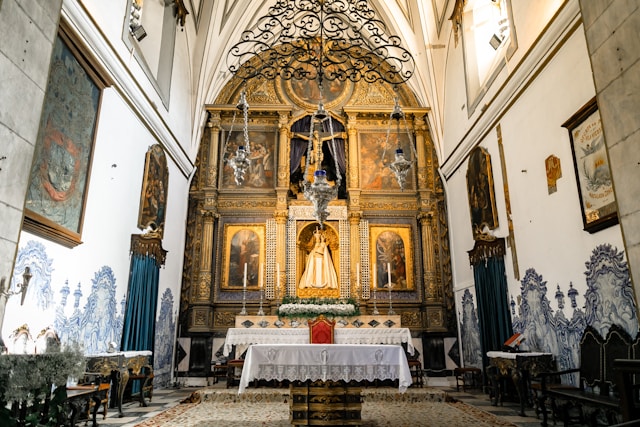
Cathedral of Christ the King: A Monumental Masterpiece of Modern Architecture
Introduction
Nestled in the heart of Atlanta, Georgia, the Cathedral of Christ the King stands as a testament to the enduring power of faith and the transformative nature of architectural vision. This awe-inspiring edifice, consecrated in 1968, is a captivating blend of modernism and Byzantine influences, showcasing the ingenuity and artistry of its creator, renowned architect, and priest, Francis Joseph Keally.
Architecture and Design
The Cathedral’s striking silhouette is a symphony of geometric forms and soaring lines. Its central feature is the massive hyperbolic paraboloid roof, an engineering marvel that spans 200 feet and rises to a height of 125 feet. This innovative design, inspired by the fluidity of the ocean, allows for a vast, column-free interior, creating a sense of limitless space and boundless connection with the divine.
Complementing the roof’s graceful curves are the Cathedral’s soaring stained glass windows, each a vibrant masterpiece of color and light. Designed by Michael J. Dwyer, these windows depict scenes from the Bible and the lives of saints, casting a kaleidoscope of hues onto the interior, transforming the space into a living canvas of faith.
Interior Splendour
The Cathedral’s interior is a sanctuary of tranquility and beauty. The vast expanse of the nave is punctuated by a series of arches and columns, creating a sense of rhythm and flow. The focal point of the space is the altar, a stunning work of art designed by John F. Stevens. Crafted from marble and bronze, the altar is an exquisite representation of Christ’s triumph over death, with its centerpiece being a 12-foot bronze crucifix.
Surrounding the altar is a series of chapels, each dedicated to a different saint or aspect of the Catholic faith. The Chapel of the Blessed Sacrament, in particular, is a secluded sanctuary where the Eucharist is reserved, offering a place for quiet contemplation and connection with the divine presence.
Spiritual Significance
Beyond its architectural grandeur, the Cathedral of Christ the King is a vibrant and active centre of faith. As the seat of the Archdiocese of Atlanta, it is the spiritual home to close to 2 million Catholics. Masses are held regularly, offering a sacred gathering place for prayer, community, and the celebration of sacraments.
The Cathedral also plays a significant role in the broader Atlanta community. It hosts a variety of outreach programs, including a food pantry, a shelter for the homeless, and a tutoring program for underprivileged youth. These initiatives reflect the Cathedral’s commitment to serving those in need and fostering a spirit of compassion and justice.
Historical Context and Impact
The Cathedral’s construction was a testament to the growing confidence and aspiration of the Atlanta Catholic community in the post-World War II era. It replaced the former Cathedral of Christ the King, which had burned down in 1955. The new Cathedral was designed to be a symbol of faith, unity, and progress for the city.
The Cathedral’s architectural style was both cutting-edge and deeply rooted in tradition. Its modern forms and materials represented a departure from the traditional Gothic and Romanesque styles of many cathedrals, while its Byzantine influences, such as the use of domes and mosaics, paid homage to centuries of Christian architectural heritage.
Visitors’ Experience
Visiting the Cathedral of Christ the King is an unforgettable experience that combines awe and inspiration. Visitors are welcome to explore the Cathedral at their own pace, admiring its architectural beauty and absorbing its spiritual atmosphere.
Guided tours are available, providing visitors with insights into the Cathedral’s history, design, and symbolism. The tour culminates in a visit to the rooftop terrace, offering panoramic views of downtown Atlanta and the surrounding cityscape.
Practical Information
- Address: 2699 Peachtree Rd NW, Atlanta, GA 30305
- Hours: Open daily from 8:00 AM to 6:00 PM
- Mass Times: Visit the Cathedral’s website for the latest mass schedule
- Accessibility: The Cathedral is wheelchair accessible and provides assistive listening devices for the hearing impaired
- Admission: Free of charge
Conclusion
The Cathedral of Christ the King is a true architectural masterpiece, showcasing the transformative power of faith and the brilliance of human ingenuity. Its soaring forms and radiant interior create a space where the sacred and the secular meet, inspiring awe and inviting contemplation. As a symbol of the Atlanta Catholic community, the Cathedral stands as a beacon of hope, unity, and unwavering commitment to the pursuit of the divine.
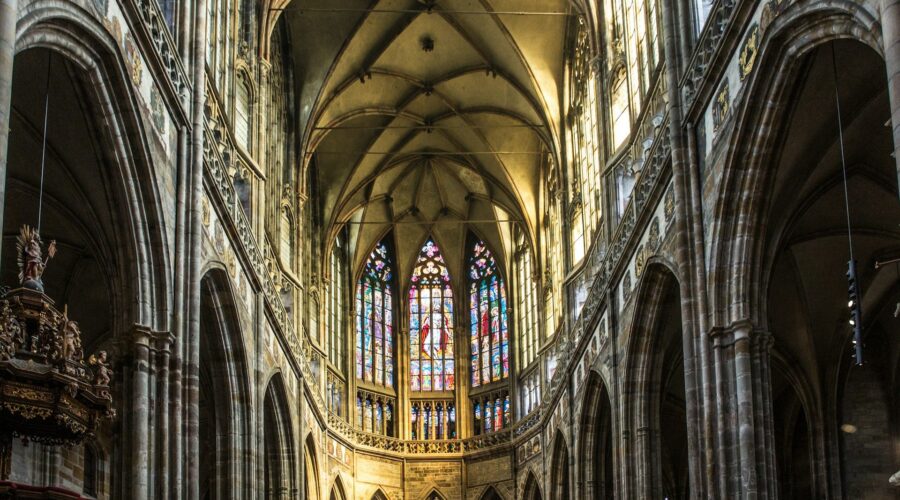
Unveiling the Rich History and Inspiring Mission of Saint Francis Xavier Catholic Church
Introduction
Saint Francis Xavier Catholic Church, nestled amidst the vibrant tapestry of communities in Malabar, Florida, has embarked on a remarkable journey of over six decades, leaving an enduring legacy of faith, service, and spiritual enrichment.
The Genesis: Humble Beginnings
Birth of a Parish
On March 29, 1959, Archbishop Patrick Hurley of the then-Diocese of St. Augustine, recognized the growing need for a Catholic community in the Malabar area. He appointed Father Patrick Cooper as the founding pastor of Saint Francis Xavier Catholic Church.
The fledgling parish initially met in a local school before purchasing a small chapel on Babcock Street in 1962. This modest structure became the cornerstone of a thriving Catholic community, eagerly anticipating the construction of a permanent church.
A Home for the Faithful
In 1968, under the leadership of Father Daniel J. O’Brien, the parish embarked on an ambitious project to build a new church. Architect William Sloan designed the breathtaking edifice, blending traditional and modern elements.
The cornerstone was laid on January 12, 1969, and on December 14, 1969, Archbishop Hurley solemnly dedicated the new Saint Francis Xavier Catholic Church. The church’s striking features include a soaring bell tower, stained glass windows depicting scenes from the life of Saint Francis Xavier, and a spacious sanctuary adorned with intricate artwork.
A Thriving Community
Over the decades, Saint Francis Xavier Catholic Church has flourished into a vibrant and diverse community, welcoming parishioners from all walks of life. The parish offers a wide range of ministries and programs, including:
- Education: Religious education classes for all ages, adult faith formation programs, and Bible study groups
- Worship: Daily Masses, weekend Masses in English and Spanish, and special liturgical celebrations throughout the year
- Service: Outreach programs to the needy, such as a food pantry, clothing drives, and support for local charities
- Fellowship: Social events, community gatherings, and youth groups that foster a strong sense of belonging
Service and Outreach
Inspired by the teachings of Saint Francis Xavier, the patron saint of missions, the parish places a strong emphasis on service and outreach. The Saint Francis Xavier Society of Saint Vincent de Paul provides assistance to the homeless, the elderly, and families in need.
The parish also supports various missionary efforts, both locally and internationally. It partners with organizations such as Catholic Relief Services, Feed the Hungry, and Habitat for Humanity to address poverty, hunger, and homelessness around the world.
Educational Legacy
Saint Francis Xavier Catholic Church recognizes the importance of lifelong learning. The parish established Saint Francis Xavier Catholic School in 1962, which has since become a pillar of Catholic education in the community.
The school provides a rigorous academic curriculum rooted in Catholic values. It fosters intellectual growth, spiritual formation, and a commitment to serving others. Graduates of Saint Francis Xavier Catholic School have gone on to make significant contributions to their communities and the world.
A Place of Pilgrimage and Reverence
The relics of Saint Francis Xavier, brought to the church from Rome in 1970, have made Saint Francis Xavier Catholic Church a destination for pilgrims from near and far. The relics are enshrined in a special chapel, where the faithful can venerate the saint and seek his intercession.
The church also houses a life-sized statue of Saint Francis Xavier, a constant reminder of his missionary zeal and unwavering faith. Visitors are often moved by the beauty of the relics and the inspiring presence of the statue.
Leadership and Stewardship
Saint Francis Xavier Catholic Church has been blessed with a succession of dedicated pastors who have guided the parish with wisdom and compassion. The current pastor, Father Bryan Jenkins, continues the legacy of service and stewardship, leading the parish into a bright future.
The parish relies on the generous support of its parishioners to sustain its ministries and outreach programs. Through stewardship campaigns and fundraising efforts, the community ensures that Saint Francis Xavier Catholic Church remains a beacon of faith and a source of hope for generations to come.
Conclusion
Saint Francis Xavier Catholic Church stands as a testament to the enduring power of faith, community, and service. From its humble beginnings to its present-day vibrancy, the parish has played a vital role in shaping the spiritual and cultural landscape of Malabar. As the community continues to grow and evolve, Saint Francis Xavier Catholic Church remains a steadfast presence, offering a sanctuary of worship, a source of education, and a catalyst for service to all who seek its embrace.
Call to Action
We invite you to visit Saint Francis Xavier Catholic Church, experience our vibrant community, and discover the transformative power of faith. Join us for Mass, participate in our ministries, or simply find solace and inspiration within our sacred walls. Together, we will continue the legacy of Saint Francis Xavier, spreading the Gospel message of love, compassion, and service to all.
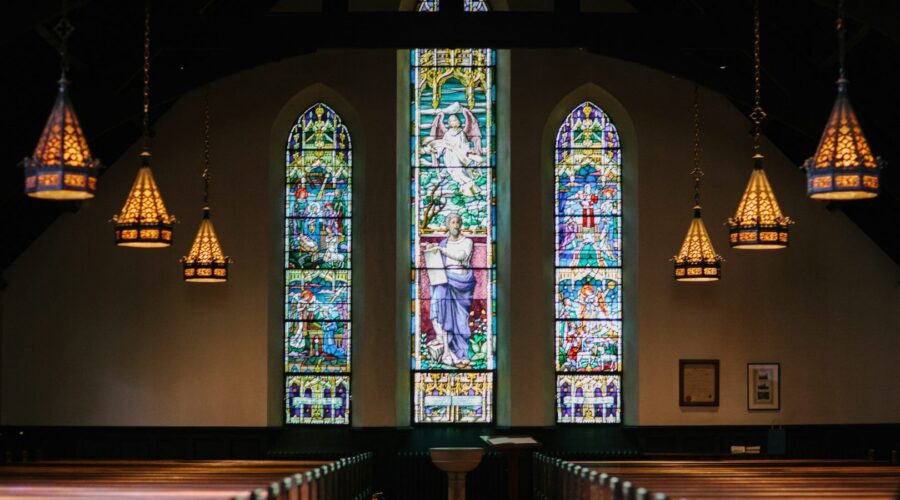
Discover the Splendid Grandeur of the Church of Our Saviour
Introduction
Nestled amidst the vibrant cityscape of Copenhagen, Denmark, the Church of Our Saviour (Frelser Kirke) stands as a towering testament to architectural ingenuity and spiritual grandeur. With its iconic copper-clad spire gracefully spiraling towards the heavens, it has become an enduring symbol of both architectural excellence and religious devotion.
A Journey Through Architectural History
Baroque Brilliance
Constructed in the latter half of the 17th century, the Church of Our Saviour embodies the exuberant spirit of the Baroque architectural movement. Its elaborate facade, adorned with intricate carvings and sculptures, reflects the period’s fascination with the theatrical and the ornamental.
The Spiral Spire
The church’s most striking feature is undoubtedly its helical steeple. Designed by renowned architect Lambert van Haven, the copper-clad spire comprises five interconnected spirals, gracefully ascending towards the sky. The spire serves not only as a decorative element but also as a functional staircase, allowing visitors to climb to the top for breathtaking panoramic views of Copenhagen.
Exploring the Interior
Step inside the Church of Our Saviour, and you’re greeted by an equally awe-inspiring spectacle. The lavishly decorated interior is a testament to the skill and artistry of the era.
The Altar and Pulpit
The elaborately carved altar, a centerpiece of the church, is adorned with intricate biblical scenes and figures. The pulpit, equally impressive, is a masterpiece of Baroque craftsmanship, featuring allegorical sculptures and intricate woodwork.
The Organ
Complementing the visual splendor is the renowned organ, built by renowned organ builder Johan Lorentz in 1698. With its 40 stops and 2,500 pipes, it is one of the largest organs in Scandinavia and continues to delight audiences with its magnificent sound.
Symbolism and Significance
Beyond its architectural beauty, the Church of Our Saviour carries profound symbolic and religious significance.
The Savior’s Influence
The church is dedicated to Jesus Christ, known as “Our Savior,” in accordance with the Lutheran tradition of the Danish Evangelical Church. Its design and ornamentation aim to evoke the grandeur and majesty of the Savior.
A Beacon of Hope
The spiraling spire, ascending towards the heavens, serves as a symbol of hope and connection to the divine. It represents the journey towards salvation and the aspiration of the congregation towards spiritual enlightenment.
Tips for Planning Your Visit
* Book your visit: Pre-book a guided tour to avoid lines and ensure access to the spire.
* Wear comfortable shoes: The spiral staircase to the spire requires some physical exertion.
* Check the website: Visit the church’s official website for up-to-date information on services, events, and admission fees.
* Explore the surroundings: Take time to explore the picturesque neighborhood, including the nearby Christiania Freetown and the Nyhavn waterfront.Frequently Asked Questions
Q: Can you climb the spire?
A: Yes, visitors can climb the 400-step spiral staircase to the top of the spire for panoramic views.Q: Is photography allowed inside the church?
A: Photography is generally allowed, but it’s advised to be respectful and refrain from using flash.Q: Are there guided tours available?
A: Yes, guided tours are available in multiple languages, offering insights into the church’s architecture and history.Conclusion
The Church of Our Saviour is a magnificent fusion of architectural prowess and spiritual reverence, standing as a beacon of Baroque splendor in the heart of Copenhagen. Whether you’re an architecture enthusiast, a devout believer, or simply seeking a place of awe-inspiring beauty, this iconic landmark is an unforgettable destination that will leave a lasting impression.
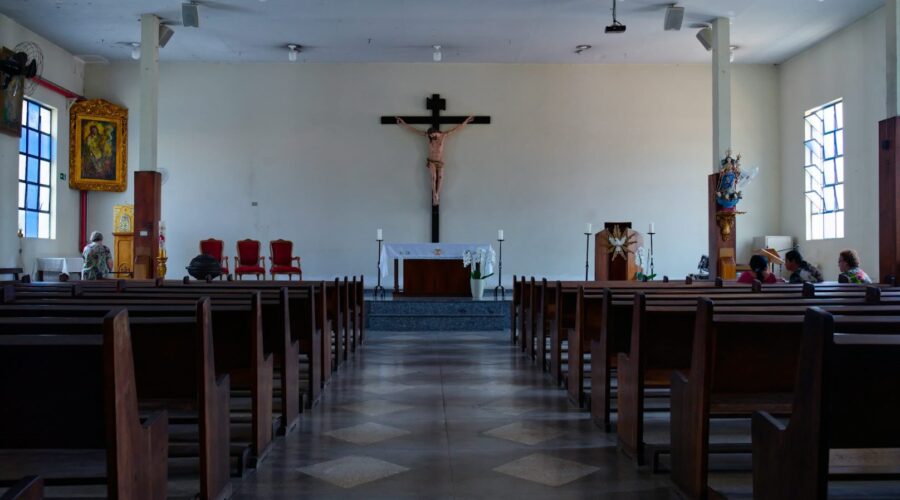
Greg Locke: A Deeper Dive into the Controversial Pastor
Introduction
Greg Locke is a pastor and a well-known figure in the Christian community, particularly within Pentecostal circles. His sermons and social media presence have garnered significant attention, both positive and negative. This blog post will explore Greg Locke’s life, beliefs, controversies, and impact.
Early Life and Ministry
Humble Beginnings
Gregory Allen Locke was born on January 21, 1969, in Mount Juliet, Tennessee. His early life was marked by financial struggles and his father’s alcoholism. At the age of 15, he got involved in drugs and alcohol.
Conversion and Calling
Locke claims to have experienced a dramatic conversion in 1987. He enrolled in the Global University of Tennessee to study theology and received his ordination in 1992. He founded his first church, “Global Vision Bible Church,” in Lebanon, Tennessee, in 1993.
Global Vision Bible Church
Growth and Popularity
Under Locke’s leadership, Global Vision Bible Church grew rapidly. He became known for his charismatic preaching style, often involving passionate denunciations of sin and appeals for salvation. The church gained a significant following both in person and online.
Controversial Teachings
Locke’s sermons have often courted controversy. He has made statements that have been criticized as homophobic, Islamophobic, and anti-science. He has been accused of promoting conspiracy theories and spreading misinformation.
Political Involvement
Support for Trump
Locke is a vocal supporter of former U.S. President Donald Trump. He participated in the “Stop the Steal” rallies following the 2020 presidential election and promoted baseless claims of election fraud.
COVID-19 Pandemic
Locke frequently defied COVID-19 restrictions and public health recommendations. He held large indoor gatherings without requiring masks or social distancing, leading to public health concerns.
Controversies and Scandals
Public Confrontations
Locke has been involved in several public confrontations. In 2020, he was arrested for trespassing after confronting a healthcare worker at a COVID-19 testing site. He has also been sued for assault and battery.
Financial Mismanagement
Locke has faced allegations of financial mismanagement. He has been accused of using church funds for personal expenses and failing to provide sufficient financial transparency.
Impact and Legacy
Growth of Pentecostalism
Locke’s ministry has contributed to the growth of Pentecostalism in the United States. His flamboyant preaching style and confrontational approach have resonated with many who feel disenfranchised or marginalized by other religious traditions.
Influence on Politics
Locke’s support for Trump and his involvement in political issues have raised concerns about the influence of religious leaders in politics. His actions and statements have polarized opinions both within and outside the Christian community.
Division and Polarization
Locke’s controversial teachings and public actions have led to division and polarization within the Christian community. Some view him as a fearless voice for truth, while others criticize his inflammatory rhetoric and disregard for basic Christian principles.
Conclusion
Greg Locke is a complex and controversial figure. His charismatic preaching, provocative statements, and political activism have garnered both support and condemnation. While he has undoubtedly had an impact on the Christian community, his legacy remains polarizing. It is up to each individual to decide whether they embrace or reject Locke’s message and actions.
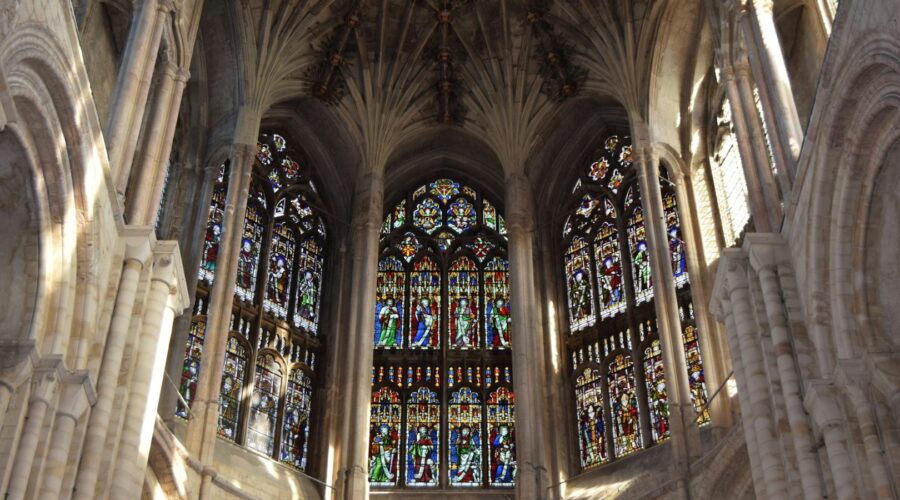
Unveiling the Life, Ministry, and Legacy of Saint Peter: The Rock upon Which the Church Was Built
Introduction
Saint Peter, the enigmatic and influential disciple of Jesus Christ, holds a prominent position in Christian history and doctrine. Known as the “Rock” upon which Jesus built his church (Matthew 16:18), Peter played a pivotal role in the early spread of Christianity and the formation of its core beliefs.
Early Life and Calling
Peter was born as Simon in Bethsaida, a fishing village on the Sea of Galilee. He was a fisherman by trade and had a brother named Andrew, who also became a disciple of Jesus. According to the Gospel accounts, Jesus met Simon and called him to follow, giving him the new name “Peter” (meaning “rock”).
Life with Jesus
Peter became one of Jesus’ closest disciples, a member of the inner circle that included James and John. He witnessed many of Jesus’ miracles, including the feeding of the five thousand and the walking on water. Peter’s impulsive and outspoken nature is often depicted in the Gospels, such as when he declared his belief in Jesus as the Messiah (Matthew 16:16-18) and later denied him during his crucifixion (Matthew 26:69-75).
The Rock of the Church
In the Gospel of Matthew, Jesus gives Peter the authority to “bind and loose” (Matthew 16:19), symbolizing his role as the foundation and authority in the church. After Jesus’ resurrection, Peter became a prominent leader among the apostles. He preached the first Pentecost sermon (Acts 2:14-41), played a key role in the early church councils (Acts 15), and is credited with establishing the church in Rome.
Persecution and Martyrdom
Like many early Christians, Peter faced persecution for his faith. According to tradition, he was crucified upside down in Rome during the reign of Emperor Nero around 64 AD. His tomb is believed to be located beneath St. Peter’s Basilica in Rome, where he is venerated as the first pope and the patron saint of the Catholic Church.
Legacy and Significance
Saint Peter’s legacy as the “Rock” of the church continues to shape Christianity today. His role as a foundational figure, his leadership in spreading the gospel, and his unwavering faith provide important lessons for believers worldwide.
Table of Key Events in Peter’s Life
| Event | Approximate Date |
|—|—|
| Birth in Bethsaida | 1st century AD |
| Called as a disciple by Jesus | 29-30 AD |
| Jesus gives Peter the name “Rock” | 30 AD |
| Pentecost sermon | 33 AD |
| Establishment of the church in Rome | 45-60 AD |
| Martyrdom | 64 AD |Related Figures
Prayer to Saint Peter
O Saint Peter, Rock of the Church,
We ask for your intercession and guidance.
Help us to be steadfast in our faith,
And to follow the example of your unwavering devotion.
Protect us from persecution and harm,
And lead us to eternal salvation.
Amen.Conclusion
Saint Peter, the enigmatic and influential apostle, remains a towering figure in Christian history. His life, ministry, and legacy continue to inspire believers worldwide. As the “Rock” upon which the church was built, Peter’s unwavering faith and leadership provide a foundation for the Christian faith and a reminder of the importance of God’s grace and mercy.
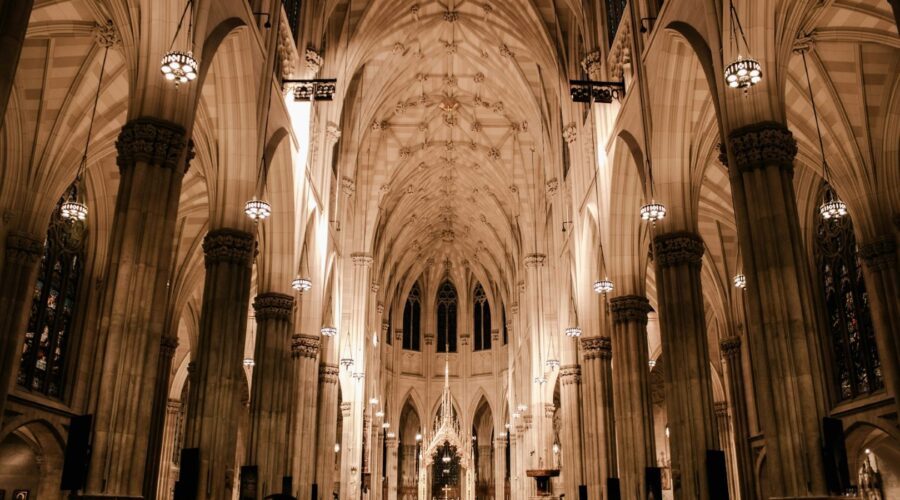
St. Cyril: The Apostle to the Slavs and Visionary Linguist
Early Life and Missionary Zeal
St. Cyril (c. 827-869), born Constantine, was a Byzantine monk, scholar, and missionary. His missionary zeal began at an early age when he became a member of the “Philosophers’ Circle” in Constantinople, where he studied theology, philosophy, and languages. Cyril’s fluency in multiple languages, including Greek, Latin, Hebrew, Syriac, and Slavic dialects, would prove invaluable in his role as an apostle to the Slavic peoples.
Mission to the Slavs
In 862, Cyril and his brother Methodius were summoned by Prince Rastislav of Great Moravia, a Slavic state in what is now the Czech Republic, to create a written language for his people. Cyril and Methodius accepted the challenge and embarked on the creation of the Glagolitic alphabet, the first written script specifically designed for Slavic languages.
Creation of Slavic Liturgy
Cyril and Methodius realized that the translation of liturgical texts into Slavic was crucial for the effective evangelization of the Slavs. They translated the Bible, missals, and other liturgical texts into Old Church Slavonic, laying the foundation for a unified Slavic liturgy. This translation allowed for the celebration of divine services in the Slavic language, fostering a deeper connection between the people and their faith.
Conflict and Exile
Despite their success in spreading Christianity and literacy among the Slavs, Cyril and Methodius faced opposition from German bishops who asserted their authority over the Slavic Church. They traveled to Rome in 867 to seek support from Pope Nicholas I, who consecrated Methodius as Archbishop of Pannonia and Moravia. However, after Cyril’s death in Rome in 869, German bishops successfully lobbied for the suppression of Cyril and Methodius’s work.
Legacy and Impact
- Slavic Language and Literacy: Cyril and Methodius’s creation of the Glagolitic alphabet and translation of liturgical texts paved the way for the flourishing of Slavic literature, culture, and identity.
- Spread of Christianity: Their missionary work brought Christianity to Eastern Europe and established a strong Slavic Christian tradition.
- Patron Saints of Europe: In 1980, Pope John Paul II declared Cyril and Methodius joint patron saints of Europe, recognizing their contributions to the unification of the continent.
- Cyrillic Alphabet: The Glagolitic alphabet was later replaced by the Cyrillic alphabet, which is used today in various Slavic languages, including Russian, Ukrainian, and Bulgarian.
Feast Day and Veneration
St. Cyril’s feast day is celebrated on February 14 in both the Eastern Orthodox Church and the Roman Catholic Church. He is venerated as a saint, teacher, and patron of Bulgaria, Slovakia, the Czech Republic, and the Slavic peoples. His contributions to Slavic culture and Christianity continue to be celebrated and remembered to this day.
Additional Resources
- Saint Cyril and Saint Methodius (Catholic Encyclopedia)
- Cyril and Methodius (Encyclopedia Britannica)
Conclusion
St. Cyril, the Apostle to the Slavs, played a pivotal role in shaping the cultural and spiritual landscape of Eastern Europe. His creation of a written Slavic language, translation of liturgical texts, and missionary work laid the foundation for a vibrant Slavic Christian tradition. Cyril and Methodius’s unwavering commitment to spreading Christianity and preserving Slavic culture continues to inspire the people of their legacy today.
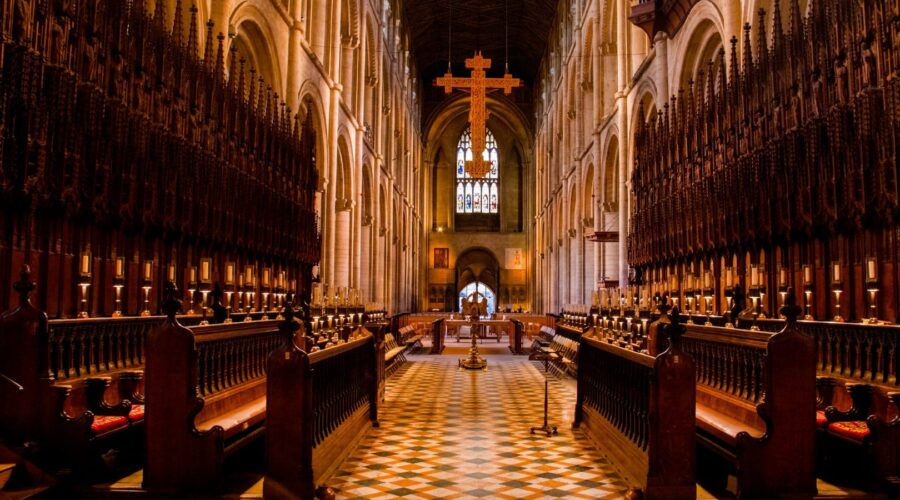
St. Peter Catholic Church: A Historical and Spiritual Landmark
Introduction
St. Peter Catholic Church is a beacon of faith and architectural beauty in the heart of Chicago’s vibrant West Loop neighborhood. Established in 1844, it has witnessed over a century and a half of Chicago’s history and played a pivotal role in the spiritual lives of countless parishioners.
Historical Significance
Foundation and Early Years
St. Peter Catholic Church traces its origins to 1844 when a group of German immigrants established a small congregation in a rented house near the Chicago River. The parish’s first pastor, Rev. John B. Stallo, led the community through its formative years.
Growth and Expansion
As Chicago rapidly expanded in the late 19th century, so did St. Peter’s congregation. In 1868, the original church building was replaced with a larger structure at Clark and Madison Streets. The parish continued to grow, and by the early 20th century, it had become one of the largest Catholic churches in Chicago.
Architectural Marvel
Neo-Gothic Design
St. Peter Catholic Church is a testament to the architectural prowess of its time. Built in the Neo-Gothic style, the church features soaring spires, intricate stained glass windows, and a graceful nave. Its twin towers reach a height of 198 feet, making it a prominent landmark on the Chicago skyline.
Interior Features
The interior of the church is equally impressive. The nave is adorned with a vaulted ceiling, marble columns, and intricate mosaics. The sanctuary features a large stained glass window depicting the life of St. Peter and a stunning altarpiece.
Spiritual and Community Center
Liturgical Life
St. Peter Catholic Church is a vibrant center of liturgical life. Daily and Sunday Masses are celebrated in English, Spanish, and Polish. The parish also offers a wide range of devotional services, including Eucharistic adoration, rosary, and Stations of the Cross.
Community Outreach
St. Peter Catholic Church has a strong commitment to community outreach. The parish operates a food pantry, a soup kitchen, and a homeless shelter. It also provides educational programs, social services, and support to the West Loop neighborhood.
Parish Life
Educational Programs
St. Peter Catholic Church offers a wide range of educational programs for all ages. The parish school, established in 1869, provides a quality Catholic education from pre-kindergarten through eighth grade. The parish also offers adult education classes, Bible studies, and faith formation programs.
Cultural and Social Events
St. Peter Catholic Church is a hub for cultural and social events. The parish hosts annual festivals, concerts, and lectures. It also has a vibrant community center that offers meeting spaces, recreational activities, and social gatherings.
Practical Information
Location and Contact Information
St. Peter Catholic Church is located at 112 W. Madison Street, Chicago, IL 60602. The church office can be reached at (312) 332-4510, and the website can be found at https://www.stpetercatholicchurch.org.
Mass Schedule
Mass schedules are as follows:
Day Time Monday-Friday 7:00 AM, 12:10 PM Saturday 5:00 PM Sunday 7:30 AM, 9:00 AM, 10:45 AM (Spanish), 12:30 PM Conclusion
St. Peter Catholic Church is more than just a building; it is a symbol of faith, community, and architectural splendor. For over 175 years, it has served as a spiritual beacon for countless Chicagoans and continues to be a vibrant center of liturgical life and community outreach in the heart of the city.
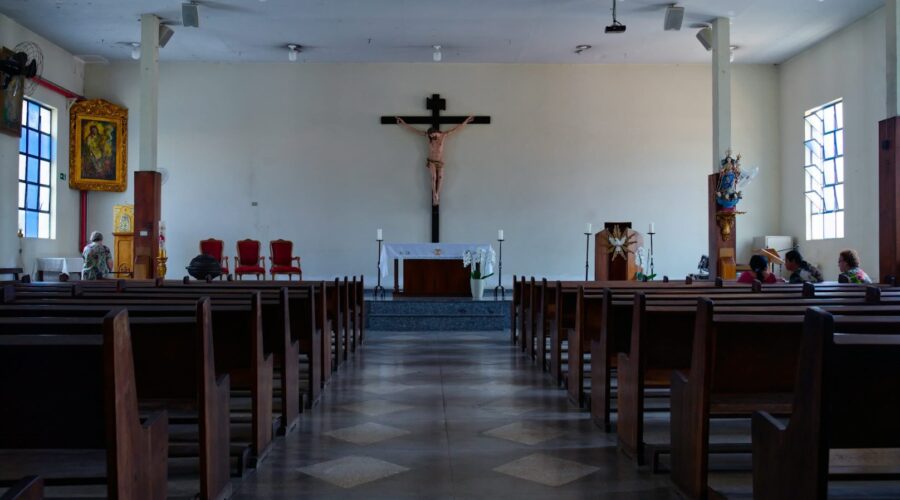
Explore the Historic Grandeur and Spiritual Significance of San Carlo al Corso
Nestled in the heart of Rome’s vibrant historical center, San Carlo al Corso stands as a testament to Baroque architectural splendor and a beacon of Catholic faith. This magnificent church, dedicated to Saint Charles Borromeo, captivates visitors with its intricate details, rich history, and profound spiritual significance.
History and Architectural Masterpiece
San Carlo al Corso was commissioned by the Cardinal Protector of the Lombard Order in 1610 and designed by the renowned architect Onorio Longhi. The church’s construction spanned several decades, with the facade being completed in 1669. The result is a harmonious blend of architectural styles, showcasing elements from the Renaissance, Baroque, and Mannerist periods.
Inspired by Saint Charles Borromeo
The church’s dedication to Saint Charles Borromeo, the 16th-century Archbishop of Milan, reflects the tremendous impact he had on the Catholic Church. Known for his piety, zeal for reform, and devotion to the sick and needy, Saint Charles Borromeo became a model of Christian leadership. His life and legacy continue to inspire the faithful to this day.
Baroque Splendor
The interior of San Carlo al Corso is a symphony of Baroque extravagance. Its soaring dome, adorned with frescoes depicting scenes from Saint Charles Borromeo’s life, dominates the space. The walls and ceiling are adorned with opulent paintings, sculptures, and intricate carvings that seamlessly blend art and devotion.
Highlights of the Interior
- Cappella Borromeo: The heart of the church, this chapel houses relics of Saint Charles Borromeo and showcases stunning artwork.
- Altar of the Blessed Sacrament: This grand altar, designed by Pietro da Cortona, features a tabernacle adorned with precious gems.
- Frescoes: The church’s ceilings are adorned with a series of frescoes by renowned artists such as Guido Reni and Carlo Maratta.
Spiritual Significance and Community
Beyond its architectural grandeur, San Carlo al Corso holds immense spiritual significance as a center of worship and community. It is a place where the faithful gather for Mass, prayer, and fellowship.
Devotion to Saint Charles Borromeo
Pilgrims from around the world visit San Carlo al Corso to pay homage to Saint Charles Borromeo. The church houses a statue of the saint, which is said to grant miracles to those who pray to him.
Community Center
The church also serves as a hub for the local community, offering a variety of programs and services. These include religious education classes, social gatherings, and outreach programs for the less fortunate.
Visiting San Carlo al Corso
If you plan to visit San Carlo al Corso, here are some tips to make the most of your experience:
Hours and Admission
The church is open daily from 7:00 am to 7:00 pm. Admission is free of charge.
Guided Tours
Guided tours are available upon request. Contact the church directly for more information.
Respectful Attire
When visiting a church, it is customary to dress respectfully. Avoid wearing shorts, tank tops, or revealing clothing.
Photography
Photography is permitted inside the church, but please be respectful of others during worship services.
Conclusion
San Carlo al Corso is a captivating masterpiece of architecture, a sanctuary of faith, and a vibrant community center. Its rich history, stunning beauty, and spiritual significance make it a must-visit destination for both tourists and pilgrims alike. Whether you seek inspiration, admire art, or connect with your faith, San Carlo al Corso offers an unforgettable experience that will stay with you long after your visit.
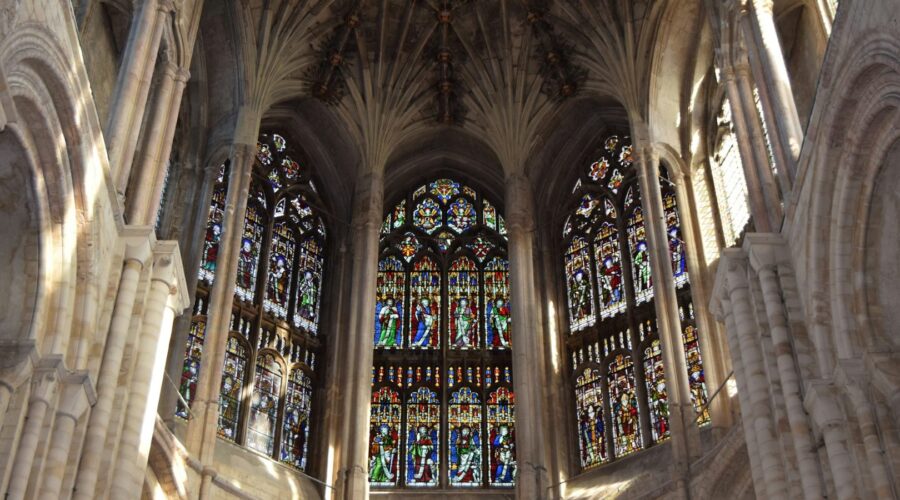
Discover the Inspiring Legacy of Pastor Leon Fontaine: A Beacon of Faith and Community Service
Introduction
Pastor Leon Fontaine was a renowned spiritual leader, community activist, and social justice advocate whose life and work left an indelible mark on the city of Montreal and beyond. As the founder and pastor of the influential Emmanuel Baptist Church in the Côte-des-Neiges neighborhood, he dedicated his life to serving the needs of his congregation and the broader community. Pastor Fontaine’s unwavering faith, compassionate heart, and tireless efforts continue to inspire generations of Montrealers to this day.
Early Life and Education
Leon Fontaine was born in Montreal on September 28, 1929, to parents of Haitian descent. He grew up in the poverty-stricken neighborhood of Griffintown, where he witnessed firsthand the challenges and injustices faced by marginalized communities. Fontaine’s early experiences instilled in him a deep sense of empathy and a desire to make a difference in the lives of others.
After completing his primary education, Fontaine attended Sir George Williams College (now Concordia University) where he earned a degree in social work. He also pursued theological studies at the United Theological College of Montreal and was ordained as a Baptist minister in 1954.
Founding of Emmanuel Baptist Church
In 1956, Pastor Fontaine founded Emmanuel Baptist Church in response to the growing need for a vibrant and inclusive church community in the Côte-des-Neiges neighborhood. The church quickly became a spiritual home for people from all walks of life, regardless of their race, ethnicity, or social background. Under Fontaine’s leadership, Emmanuel Baptist Church became known for its welcoming atmosphere, dynamic worship services, and commitment to social justice.
Community Activism and Social Justice Initiatives
Beyond his pastoral duties, Pastor Fontaine was actively involved in community activism and social justice initiatives. He played a pivotal role in the founding of the Côte-des-Neiges Black Community Centre, which provided vital services to the neighborhood’s Black population. Fontaine also advocated for affordable housing, access to healthcare, and the rights of immigrants and refugees.
In 1969, Pastor Fontaine co-founded the Black Coalition of Quebec, a provincial organization that sought to address issues of racial discrimination and inequality. He served as the organization’s president for several years and led numerous campaigns for social justice reform.
Interfaith Dialogue and Ecumenical Partnerships
Pastor Fontaine was a strong advocate for interfaith dialogue and ecumenical partnerships. He believed that different religious traditions could learn from and enrich one another, and he worked tirelessly to build bridges between different faith communities. Fontaine was instrumental in the creation of the Montreal Interfaith Council, which brought together leaders from various religious groups to promote understanding and cooperation.
Awards and Recognition
Pastor Leon Fontaine received numerous awards and accolades for his outstanding contributions to the Montreal community. In 1992, he was appointed to the Senate of Canada, where he served with distinction for 11 years. In 2000, he was awarded the Order of Canada, one of the highest civilian honors in the country. Fontaine also holds several honorary doctorates from universities in Canada and the United States.
Legacy and Impact
Pastor Leon Fontaine’s legacy continues to inspire and guide Montrealers today. His unwavering faith, compassionate heart, and tireless advocacy for social justice left an indelible mark on the city. Emmanuel Baptist Church remains a vibrant and active community, carrying on Fontaine’s mission of inclusivity, service, and justice. The Côte-des-Neiges neighborhood is a testament to his lifelong commitment to improving the lives of its residents.
Conclusion
Pastor Leon Fontaine was a true visionary and a champion for the marginalized. His life and work are a testament to the power of compassion, faith, and community engagement. As we continue to grapple with issues of inequality and injustice, Pastor Fontaine’s legacy serves as a reminder that we can make a difference in the lives of others, one step at a time.
Additional Resources